Dealing with an aggressive and violent puppy can be both stressful and disheartening for pet owners. What starts as an adorable bundle of energy can quickly turn challenging when biting, growling, or other forms of aggression emerge. While these behaviors might seem alarming, they are not uncommon in young dogs and often stem from fear, frustration, or inadequate socialization.
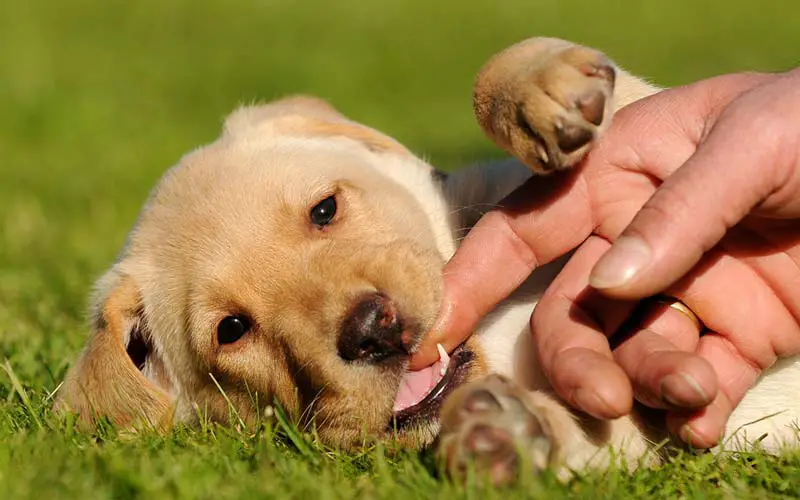
Understanding the root causes of your puppy’s aggression is the first step toward creating a calmer and more harmonious household. In this article, we’ll explore why puppies exhibit aggressive behaviors, how to differentiate between normal play and concerning actions, and provide actionable strategies to help you manage and reduce your puppy’s aggression effectively.
By the end of this guide, you’ll feel more confident addressing these behaviors and fostering a strong, trusting relationship with your puppy.
1. Understanding Puppy Aggression
1.1 What Is Aggression in Puppies?
Aggression in puppies refers to behaviors that appear hostile or threatening, such as growling, snapping, biting, barking, or lunging. While these actions can be alarming, it’s essential to recognize that most aggressive behavior in puppies is not a sign of inherent hostility. Instead, it often signals underlying issues, such as fear, frustration, or discomfort.
Puppies explore and interact with their environment through their mouths, which can sometimes escalate into behaviors that seem aggressive. These actions are typically their way of communicating stress, discomfort, or a need for boundaries. Understanding what triggers your puppy’s aggressive responses is crucial to addressing the root cause effectively.
1.2 Common Causes of Aggression
Fear or Anxiety
- Puppies may react aggressively when they feel threatened or frightened. New environments, unfamiliar people, or loud noises can cause fear-based aggression as the puppy tries to protect itself.
Lack of Early Socialization
- Puppies that aren’t exposed to various people, animals, and environments during their critical socialization period (3–14 weeks) may grow up feeling unsure or threatened by new experiences, leading to defensive behaviors.
Teething and Exploratory Biting
- During teething, puppies experience discomfort that makes them more likely to bite or chew. They might also use their mouths to explore their surroundings, unintentionally nipping or biting in the process.
Overstimulation or Play Aggression
- High-energy play sessions can sometimes lead to overstimulation, causing a puppy to bite or nip harder than intended. This type of aggression is often more about excitement than hostility.
Territorial Instincts or Resource Guarding
- Puppies may display aggressive behaviors when protecting resources they value, such as food, toys, or even their favorite spot. This instinct stems from their evolutionary drive to safeguard essential items.
Health Issues or Pain
- Medical conditions or pain can make puppies irritable and more prone to aggressive responses. For instance, an ear infection or an injury could cause them to react aggressively when touched.
By identifying the cause of your puppy’s aggression, you can take targeted steps to address it. Whether it’s improving socialization, managing teething discomfort, or seeking veterinary advice, understanding these root causes is key to helping your puppy grow into a well-adjusted and confident dog.
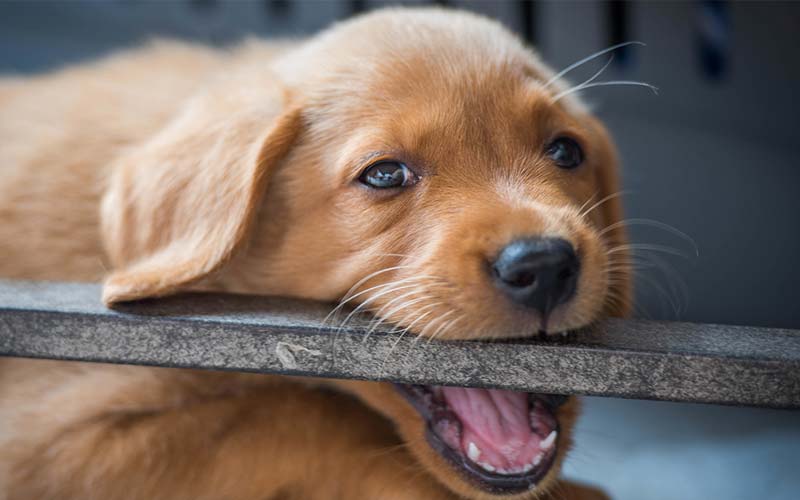
2. Recognizing the Signs of Aggression
2.1 Behavioral Indicators
Recognizing the early signs of aggression in your puppy is crucial for addressing the behavior before it escalates. Common indicators of aggression include:
- Snapping: Quick, defensive bites meant to warn or ward off a perceived threat.
- Growling: A vocal warning signaling discomfort or fear.
- Lunging: Sudden, forceful movements toward a person, animal, or object.
- Stiff Posture: A rigid body stance, often accompanied by a focused gaze, indicating heightened tension.
- Excessive Barking: Loud and persistent barking that may occur in response to unfamiliar situations or perceived threats.
It’s important to distinguish between normal puppy behavior and concerning aggression. Puppies naturally bite, nip, and growl during play as they learn boundaries and social skills. However, these actions become concerning when they occur outside of playful contexts, are accompanied by signs of fear or anxiety, or result in injuries.
Key differences include:
- Normal Play: Loose body movements, wagging tails, and short, intermittent growls or barks.
- Concerning Aggression: Stiff posture, sustained growling, snapping with intent to harm, or a lack of de-escalation in tense situations.
2.2 When to Seek Help
While many instances of puppy aggression can be addressed through consistent training and behavior modification, some situations require professional intervention.
Consider consulting a veterinarian or a certified dog behaviorist if:
- Aggression Toward Children: Puppies that growl, snap, or bite at children need immediate attention, as this can pose a safety risk.
- Sustained Biting: Frequent or intense biting that breaks the skin or causes injury may indicate deeper behavioral issues.
- Escalating Aggression: Aggressive behaviors that worsen over time, despite efforts to correct them.
- Fear-Based Aggression: Persistent aggression in response to specific triggers, such as strangers or loud noises.
- Resource Guarding: Intense guarding of food, toys, or spaces that prevents normal interactions.
A professional can assess your puppy’s behavior, identify triggers, and create a tailored plan to manage and reduce aggression. Early intervention is key to ensuring your puppy grows into a well-adjusted and safe adult dog.
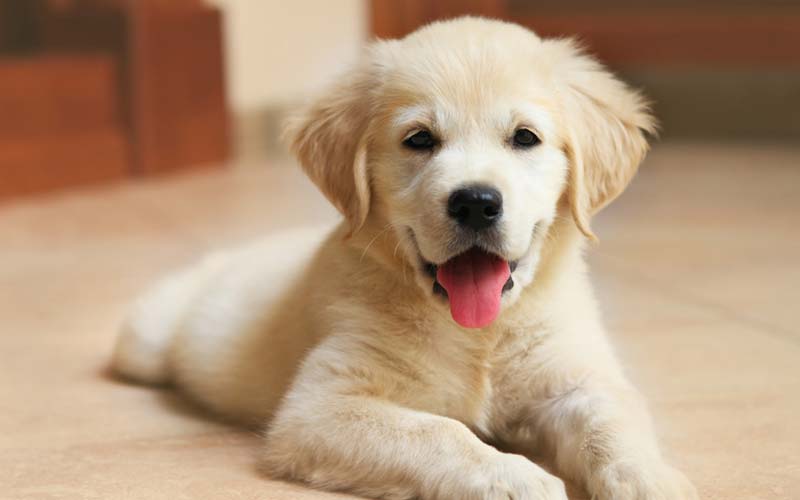
3. Managing and Reducing Aggression
3.1 Step 1: Rule Out Health Problems
The first step in addressing aggression in your puppy is ensuring it isn’t caused by an underlying medical condition. Pain, illness, or discomfort can make puppies irritable and more likely to lash out. Schedule a visit to the veterinarian for a thorough checkup, including an assessment of their teeth, joints, and overall health. Early diagnosis of health issues can help resolve aggression linked to physical discomfort.
3.2 Step 2: Start Socialization Early
Socialization is critical in helping puppies grow into well-adjusted dogs. Introduce your puppy to a variety of environments, people, and other animals during their formative weeks.
- Controlled Exposure: Ensure that these introductions are positive and gradual, avoiding overstimulation or fear.
- Positive Reinforcement: Reward calm and friendly behavior with treats or praise to encourage confidence and reduce anxiety in new situations.
Proper socialization teaches your puppy to perceive new experiences as safe and enjoyable, reducing the likelihood of fear-based aggression.
3.3 Step 3: Implement Effective Training Techniques
Training is essential for redirecting aggressive behavior and teaching your puppy appropriate responses.
- Basic Commands: Use commands like “sit,” “stay,” or “leave it” to interrupt and redirect unwanted behaviors.
- Avoid Punishment: Physical or verbal punishment can escalate aggression or make your puppy fearful. Instead, focus on rewarding good behavior.
- Consistency and Patience: Repetition and a calm demeanor are key to successful training. Consistently enforce rules and boundaries to help your puppy understand expectations.
3.4 Step 4: Provide Mental and Physical Stimulation
A bored or under-exercised puppy is more likely to act out. Ensure your puppy gets plenty of physical and mental stimulation to burn off excess energy.
- Daily Exercise: Regular walks, play sessions, or trips to the park can prevent restlessness and reduce frustration.
- Interactive Toys and Puzzles: Provide toys that challenge your puppy’s mind, such as treat-dispensing puzzles or chew toys, to keep them engaged and satisfied.
3.5 Step 5: Address Specific Triggers
Identifying and managing specific aggression triggers is crucial for long-term improvement.
- Identify Triggers: Observe your puppy’s behavior to pinpoint situations that provoke aggression, such as food guarding, toy possession, or fear of strangers.
- Desensitization: Gradually expose your puppy to the trigger in a controlled manner, pairing the experience with positive reinforcement. For example, if your puppy guards their food, practice approaching their bowl while offering a treat to create a positive association.
- Professional Support: If triggers are severe or difficult to manage, seek guidance from a certified dog trainer or behaviorist.
By following these steps, you can help your puppy develop better coping mechanisms and build a foundation of trust and security, paving the way for a calmer, happier companion.
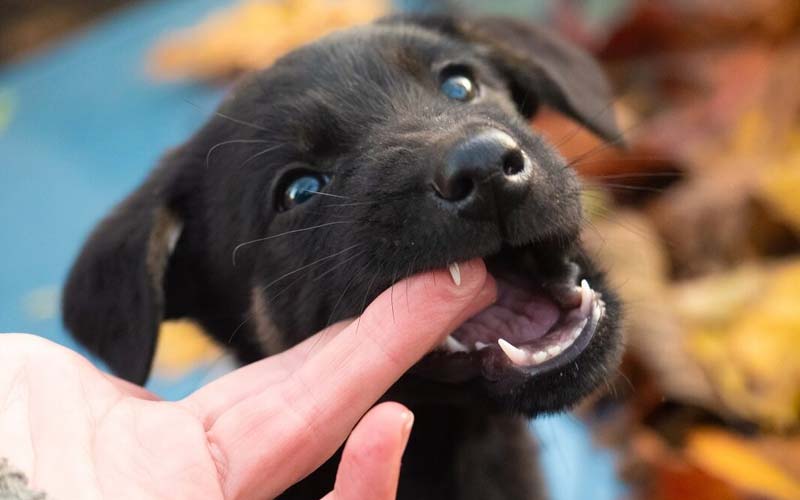
4. Long-Term Prevention Tips
4.1 Build Trust Through Positive Interactions
A strong bond built on trust and positive experiences is the foundation for preventing aggression in the long term.
- Quality Time: Spend time playing, training, and simply being present with your puppy to help them feel secure and valued.
- Gentle Reinforcement: Always use a calm and reassuring tone, especially during training or stressful situations, to foster confidence.
Trust reduces fear-based behaviors and helps your puppy see you as a source of safety and guidance.
4.2 Maintain Consistency in Training and Rules
Consistency is vital for shaping your puppy’s behavior and preventing confusion.
- Unified Approach: Ensure all household members follow the same commands, rules, and boundaries. For example, if one person allows the puppy on the couch and another doesn’t, it can create frustration and uncertainty.
- Routine: Establish regular mealtimes, training sessions, and play schedules. Predictability helps puppies feel secure and less likely to act out.
4.3 Monitor Interactions with Children and Other Pets
Puppies need gentle handling and clear boundaries when interacting with children or other animals.
- Teach Respectful Interaction: Educate children on how to approach and play with the puppy safely, avoiding pulling, rough play, or invading their space.
- Supervise Early Interactions: Monitor all initial interactions to ensure they are positive and safe for both the puppy and others.
- Gradual Introduction to Pets: If introducing a puppy to other pets, do so slowly and in a neutral space to minimize territorial aggression.
4.4 Know When to Seek Professional Help
If aggressive behaviors persist or escalate despite your efforts, professional intervention may be necessary.
- Certified Dog Trainers: Trainers can help reinforce positive behaviors and teach you advanced techniques for managing aggression.
- Animal Behaviorists: For more complex issues, a certified behaviorist can assess your puppy’s environment and behavior to create a tailored plan for improvement.
- Don’t Wait Too Long: Early intervention prevents aggressive behaviors from becoming ingrained, ensuring your puppy grows into a well-behaved adult.
By focusing on trust, consistency, and monitoring interactions, you can create an environment where your puppy feels safe and supported. Combined with professional help when necessary, these strategies will reduce the risk of long-term aggression and promote a happy, balanced relationship with your furry companion.
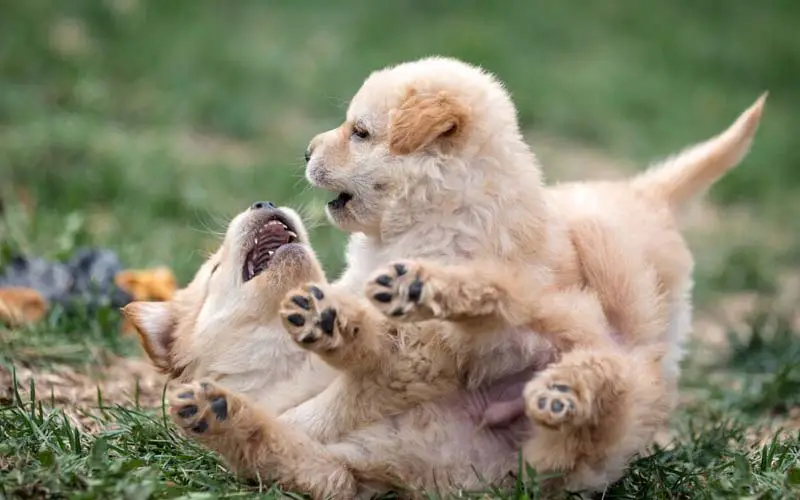
Conclusion puppy aggression
Aggression in puppies can be a concerning issue, but with the right approach, it is possible to manage and reduce these behaviors. By understanding the root causes of aggression, recognizing the signs early, and taking proactive steps such as ruling out health issues, starting socialization early, and using effective training techniques, you can set your puppy up for success.
Long-term prevention relies on building trust through positive interactions, maintaining consistency in training, and ensuring safe and respectful interactions with children and other pets. If necessary, seeking professional help can provide expert guidance tailored to your puppy’s specific needs.
By being patient, consistent, and observant, you can foster a positive, well-behaved puppy that grows into a confident and calm adult dog. Start taking action today—whether it’s scheduling a vet visit, enrolling in a training class, or simply spending more time bonding with your puppy. With the right effort and care, you’ll set the foundation for a harmonious relationship with your furry companion.